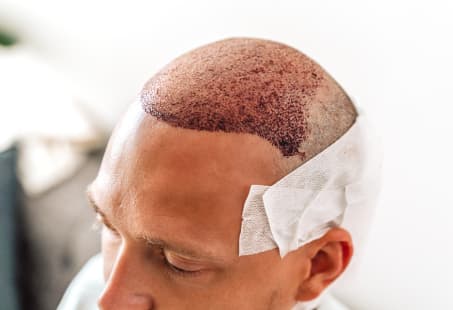Botched hair transplants aren’t unheard of. And unfortunately, many people end up having to undergo a hair transplant corrective surgery to fix some of the damage. That’s because it isn’t possible to completely reverse the results of your surgery.
There are many reasons why you might need corrective surgery, and it mainly has to do with the choice of an inexperienced and untrained surgeon. Of course, negligence of aftercare instructions can also damage your grafts and give you poor results.
But if you’re already in this situation, there might be a few things that could help you. However, whether or not it will work depends on the kind of problem you’re experiencing. Keep in mind that every patient has a limited supply of donor hair (the back and sides of the scalp).
If that’s been depleted, it’ll make things far more difficult, and you’d have to resort to some other hair loss treatments. In this guide, you’ll learn more about when a hair repair surgery is needed and how it can be done.
What Causes Failure In Hair Transplantation?
A hair transplant surgery can fail due to the following reasons:
Poor Technique
How a hair transplant is performed is crucial to its success. And it begins with the extracting stage, where the surgeon has to be careful about evenly removing the grafts from the donor area of the scalp.
If too many grafts are removed from the same place, it can result in overharvesting. That can leave permanent bald patches behind, which can be clearly seen with short hair.
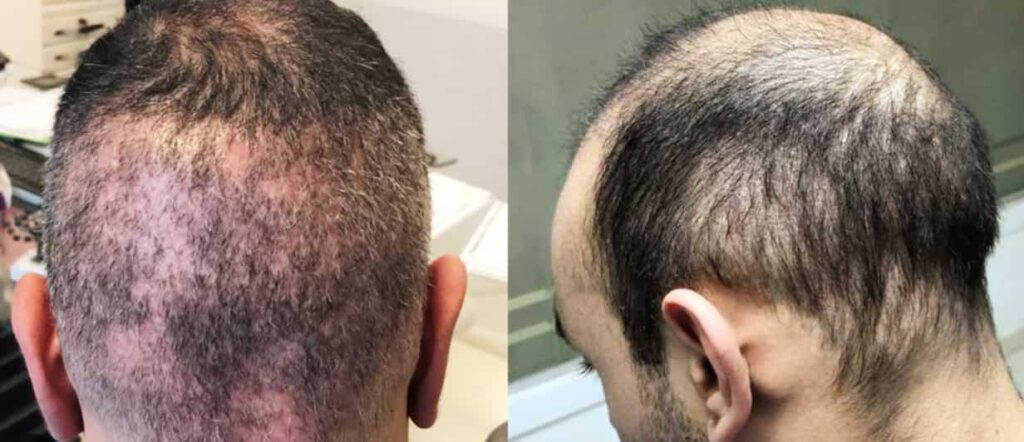
After the grafts have been extracted, they also need to be handled and stored properly so they don’t experience trauma. If they don’t survive, your density will end up being poor.
When incisions in the recipient sites are being made, the surgeon has to be careful about not packing a lot of grafts together as that can lead to necrosis of the scalp after hair transplantation.
Then during the placement itself, the surgeon needs to get the angle and orientation of the hair graft right so results look natural. Of course, there’s a lot more that goes into it, but this surgery is very technique-sensitive, and if your surgeon isn’t experienced enough, it can leave you with a bad hair transplant.
Bad Hairline Design
The failure of a hair transplant does not only have to do with its poor execution. A hair transplant is a cosmetic procedure and aesthetics are very important.
And one critical component of it is hairline design, which is definitely not about carelessly drawing curved or straight lines on the scalp.
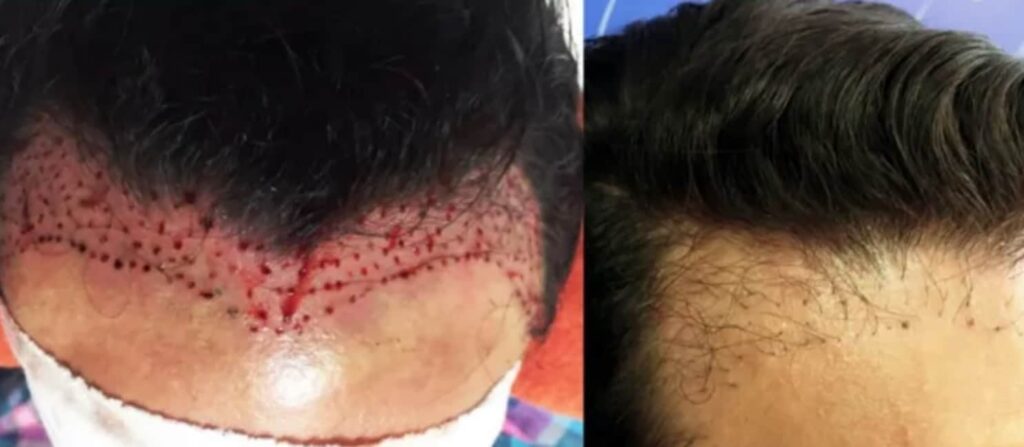
A well-drawn hairline takes several factors into account, such as the face shape and muscles, structure of the forehead, age of the patient, and the natural hairline pattern. Even then, you should decide on the final shape of your hairline together with your surgeon.
However, if it’s been drawn poorly (compounded by the fact that grafts have also not been placed properly here), your final results can be quite poor. It would be very easy for anyone to tell that you had a surgery.
Ineligible Candidates
Performing the surgery on an unsuitable candidate can also cause a hair transplant to fail. This can be the case when:
- Hair loss is diffuse – occurring all over the scalp so there’s no stable donor area.
- Patient’s too young – progression of hair loss can’t yet be predicted and there’s a risk of donor depletion.
- Donor density is low – hair transplant relies on the strength of the donor area. If there’s not enough hair there, and the surgery is performed regardless, it will leave bald patches in the donor area and give poor results overall.
- Active physical and/or mental illness – a disease like alopecia areata, for instance, can cause hair loss even after a transplant. For other conditions, you might be asked to wait for their remission and stabilisation before you’re eligible for transplant.
Unrealistic expectations can also make it seem like the hair transplant was a failure to the patient. But in such instances, the patient’s expectations should have been managed before the surgery as there might be nothing wrong with the results.
Negligence In Aftercare
Another reason why your hair transplant may fail is not following the aftercare instructions of your surgeon. If you dislodge the transplanted hair grafts or damage them in any way, that’s going to affect the final outcome.
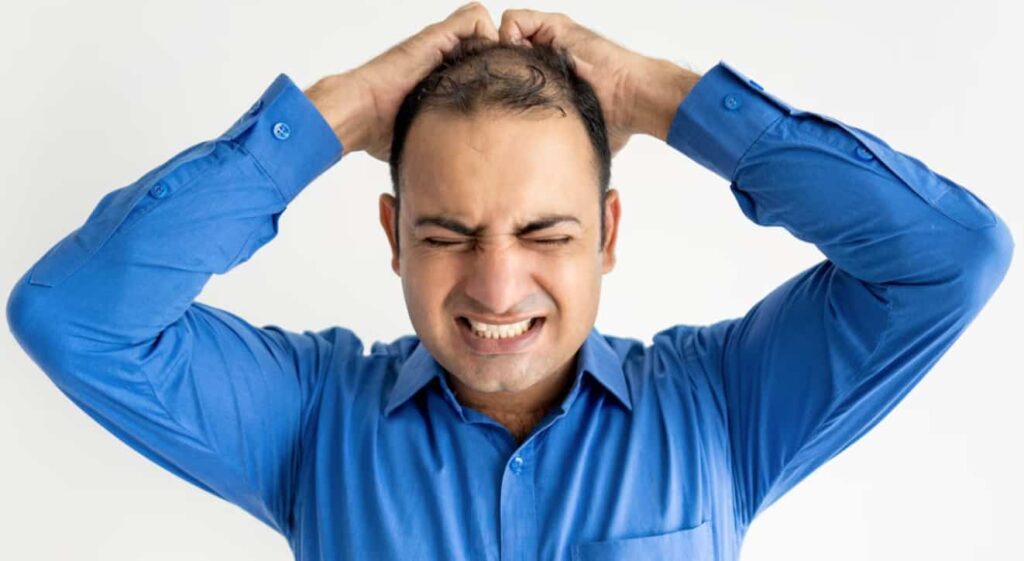
Things like avoiding strenuous physical activity, smoking and drinking alcohol, wearing tight caps or headgear, swimming pools, sweating, touching head, etc. are meant to ensure that your grafts have the best chance of survival. But ignoring them can also lead to the failure of the surgery.
What Are The Symptoms Of Bad Hair Transplantation?
If your hair transplant is botched, you might have the following symptoms:
- Bad scarring
- Cobblestoning (uneven skin where grafts were transplanted)
- Hair not growing/patchy growth
- Poor density
- Unnatural-looking hairline
- Hair grafts growing at odd angles
- Pluggy appearance of hair grafts (like a doll’s head)
- Skin death (necrosis)
- Infection
How Is Hair Transplantation Correction Surgery Performed?
It is impossible to have a “one-size-fits-all” hair transplantation correction surgery because different problems require different approaches. Keeping that in mind, your surgeon might do the following:
Extract New Grafts From Donor Area
If your hair density is poor but you still have grafts that can be safely extracted from the back of your scalp, your surgeon might use them to fix the bald patches on your scalp.
This technique can also be used to reshape the hairline (if more grafts are needed there). Moreover, transplanting new grafts into scars, like those from Follicular Unit Transplant (FUT) procedures can also help hide them.
So, if you have bad scarring, the surgeon might use the Follicular Unit Extraction (FUE) hair transplant technique to transplant new grafts into the scar to hide it.
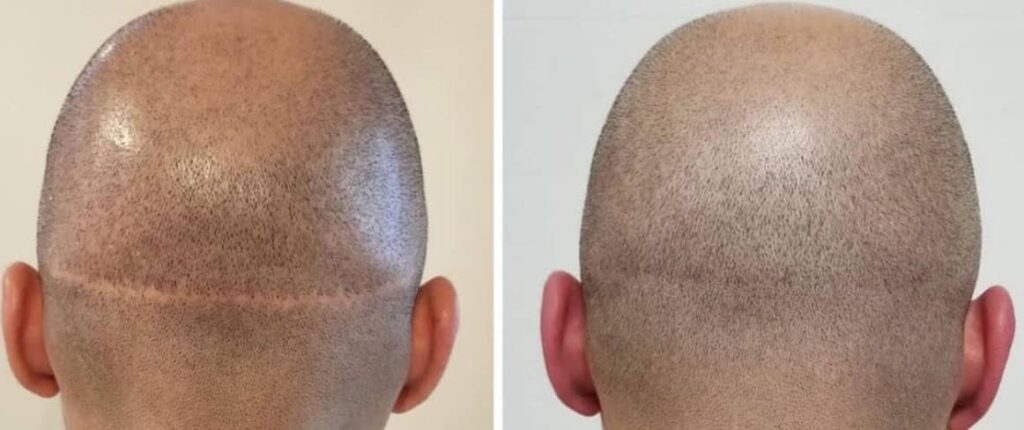
Cut Large Hair Plugs Into Smaller Ones
Transplantation of large hair plugs was more common with the old transplant techniques. But because these can look extremely unnatural, understandably so, those who have these grafts want to get them fixed.
One thing that might be done here is that your surgeon might take out the old grafts and cut them into smaller grafts for re-implantation, as explained in a study published in the Seminars in Plastic Surgery. They may also add some grafts from the back of the scalp to the front of the head to improve the results.
However, it may not always be possible to re-implant old grafts. Your surgeon might also consider removing them entirely or even cutting the entire patch of skin where such plugs are transplanted.
Re-Implant The Grafts
If there’s a problem with the placement of the grafts, for instance, their angles, the surgeon might take them out and put them back in properly.
This corrective hair transplant technique is particularly useful if there is already very little hair left in the donor area to extract. But again, some grafts might just need to be removed.
Can A Bad Hair Transplant Be Fixed?
A hair transplant correction may be possible, although it doesn’t mean that it will completely reverse all the damage that has already been done.
Besides removing grafts and re-implanting them or extracting new ones, your surgeon might also recommend scalp micropigmentation or laser hair removal to fix the poor results.
Of course, extracting new grafts can only be done if there are any left in the donor areas. Alternatively, scalp micropigmentation may be your next option if that’s not possible.
In this, the scalp is tattooed with microdots that look like hair follicles. It can give the illusion of high density. And lastly, laser hair removal can be helpful if your hairline is too low.
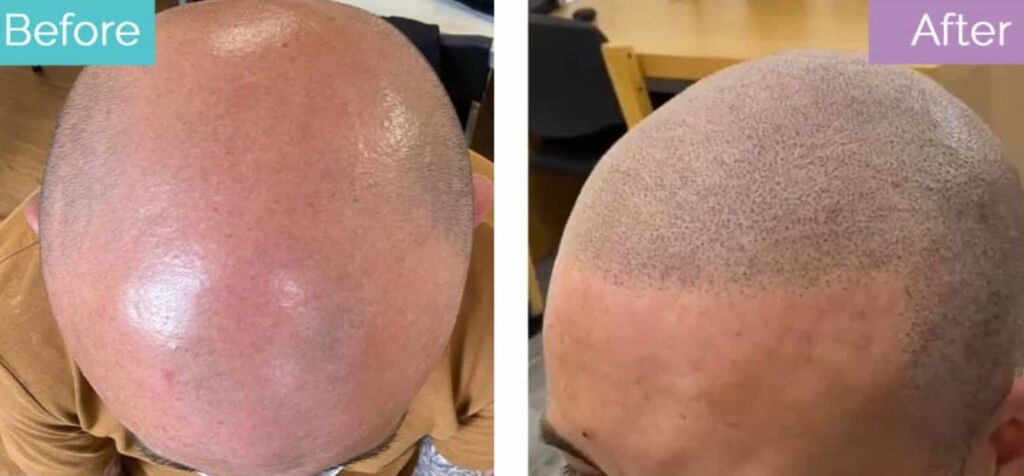
The treatment plan will depend on the extent of the problem, and you might need multiple treatments.
In any case, however, it’s of utmost importance that you find an experienced surgeon who knows how to do corrective hair transplant surgery. Otherwise, it will only worsen your situation.
How To Avoid A Bad Hair Transplant?
Prevention is always better than cure. The following may help if you want to avoid even seeking a hair transplant correction:
Find A Good Surgeon And Clinic
It can’t be stressed enough how important research is. No matter where you’re getting this surgery, you should make sure to find out the surgeon is licensed and has experience performing hair transplants.
Additionally, you should know that the facility where the surgery will take place is registered with a health authority (like the CQC in the UK and Ministry of Health in Turkey).
Don’t hesitate to ask for proof and look up the surgeon on online registers. Check the before and after photos of other patients as well and also try to connect with a previous patient of the surgeon to learn more about their experience.
Checking out the website and social media channels further help you get an understanding of the company’s operation.
Read Online Reviews
Checking out online reviews should be a part of your research as well. There’s a lot that you can find there about the surgeon, clinic, and the overall service, including the aftercare.
While clinics have reviews on their websites, it’s always a good idea to check out independent review sites (Trustpilot, Realself, Google, etc.). Moreover, you should consider checking out hair transplant forums.
Consult The Surgeon
Before you have the surgery, you must have a consultation with the surgeon. If you’re getting a hair transplant in Turkey, a proper consultation will take place there because the surgeon will be able to examine your scalp physically.
However, you can ask the clinic if they can also set up a virtual consultation with the surgeon beforehand. Although keep in mind that it won’t be the same as getting a face-to-face consultation and that’s essential to determine suitability.
During the consultation itself, ask the surgeon about the procedure, its risk and complications, recovery period, and aftercare. If a certain technique is being recommended to you, ask for its rationale.
Don’t Rush & Don’t Just Consider The Cost
Take your time to deliberate on your final decision. Even though a hair transplant is considered a minor procedure, there’s a lot that can go wrong if the surgeon and the clinic aren’t right for you.
Also, don’t let cost be the only deciding factor. If the cost is too low than any other price quotes that you’ve received, either the clinic might be hiding all the costs involved or “cutting corners.” So, be careful.
Follow The Aftercare
After you’ve had the surgery, following the aftercare is extremely important. You should ask the clinic about how the aftercare will be arranged for you.
And if you have any questions, how can you reach out to the surgeon? Failure to follow aftercare can lead to the failure of the hair transplant itself.
What Can Be Done In Case Of A Failed Hair Transplant?
If your hair transplant has failed, you might have the following options:
- Get a hair transplant correction surgery
- Get scalp micropigmentation
- Get laser treatment
- Start hair loss medications like minoxidil and finasteride
Of course, you must consult a medical professional for all of the above. But it might be possible for you to improve the results.
Conclusion
Corrective hair transplants are needed by many patients due to one reason or another. There could be a problem on the surgeon’s or patient’s end. That is why, for one, you must find a very good surgeon in the first place and follow the aftercare.
And if your surgery’s been botched, it’s even more important to find someone who can properly address the problem. You can get hair transplant corrective surgery in Turkey or anywhere else, just make sure to do your research.
Reviewed and Approved by Dr. Cagla Yuksel.
